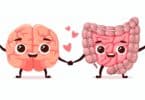When looking at autism, there is still so very much to learn and understand. One of the most interesting, and often best method, in reaching that better understanding is through identical twins. With the exact same DNA, they offer an interesting look at how and why autism occurs, and what, if anything, can be done about it.
This is exactly what King’s College London researchers were hoping to do in a recent study that identified some non-genetic biological mechanism changes of autism spectrum disorder (ASD). The condition, which affects 1 in 88 children in the United States, displays itself in three common types of impairments: deficits in social interaction and understanding, repetitive behaviors and limited interests, and impairments in communication and language development.
Evidence from previous twin studies shows that there is a very strong genetic component to autism; in approximately 70% of cases, when one twin has ASD, so does the other. But that still leaves another 30% in which one twin is not affected. What’s more, even in cases where both twins have ASD, the levels of impairment and traits may vary. Because identical twins have the exact same genetic code, this suggests that factors not related to DNA (non-gentic, or epigenetic) may be at work.
An epigenetic change can affect the expression or activity of a gene without actually altering the underlying DNA sequence. Believed to be one mechanism that environment can interact with a genome and alter the way it works, epigenetic changes may also be reversible. Better understanding how this works could help with both prevention and treatment of autism.
“Research into the intersection between genetic and environmental influences is crucial because risky environmental conditions can sometimes be avoided or changed,” Professor Jonathon Mill, lead author on the recent study from King’s College London’s Institute of Psychiatry and the University of Exeter told Science Daily.
King’s College London researchers looked at a specific epigenetic mechanism called DNA methylation. This epigenetic mechanism blocks genetic sequences that drive expression, which thereby silences the gene’s activity. Using samples from 50 identical twins (100 individuals), researchers examined the DNA methylation at over 27,000 sites across a genome. Taken from the UK Medical Research Council funded Twins Early Development Study, the study included DNA from 24 pairs of ASD twins with differing autism behaviors or traits, 5 pairs of twins with ASD, and 11 non-ASD twins.
“This is the first large-scale study to take a whole genome approach to studying epigenetic influences in twins who are genetically identical but have different symptoms,” Dr. Alycia Halladay, Senior Director of Environmental and Clinical Sciences from Autism Speaks, the organization that funded the research, told Science Daily. “These findings open the door to future discoveries in the role of epigenetics – in addition to genetics – in the development of autism symptoms.”
According to researchers, when applied to some genetic sites, DNA methylation consistently altered genetic expression for all of the ASD individuals. Differences at some sites resulted in specific symptom groups. Differences in DNA methylation markers were also found in genetic regions that have been associated with early brain development and ASD in other studies. Additionally, the severity of autism symptoms was directly linked to the number of DNA methylation sites across the genome; this points to a direct correlation between DNA methylation quantity and autism severity.
“We’ve identified distinctive patterns of DNA methylation associated with both autism diagnosis and related behavior traits, and increasing severity of symptoms,” Dr. Chloe Wong, first author of the study from King’s College London’s Institute of Psychiatry told Science Daily. “Our findings give us an insight into the biological mechanism mediating the interaction between gene and environment in autism spectrum disorder.”
Professor Mill says that the team’s next step is to look at ways that new knowledge of epigenetic influences could affect autism prevention, therapies and treatment.
“Epigenetic changes are potentially reversible, so our next step is to embark on larger studies to we whether we can identify key epigenetic changes common to the majority of people with autism to help us develop possible therapeutic interventions,” Mill said.
Related Articles:
- Scientists to Start Mapping Babies’ Brains While in the Womb and After Birth
- Study: Autistic Types and Behaviors Determine Timing of Diagnosis
- Study: Secondhand Smoke Exposure during Pregnancy may Increase Risk of Behavior Problems for Children Later in Life







